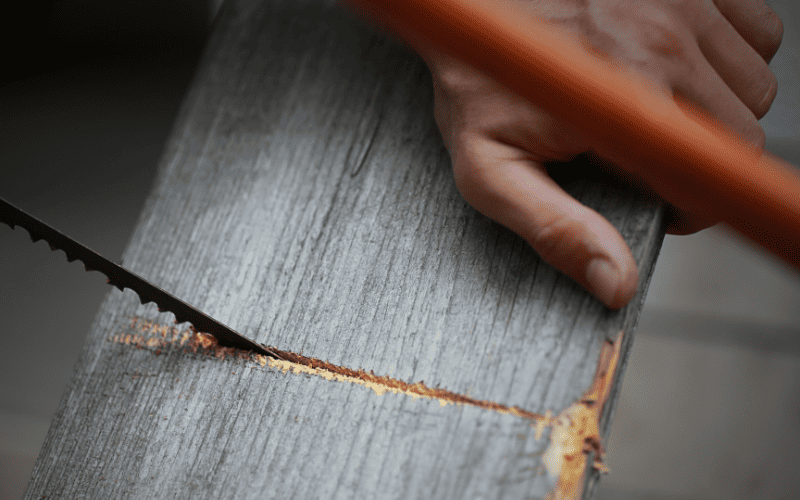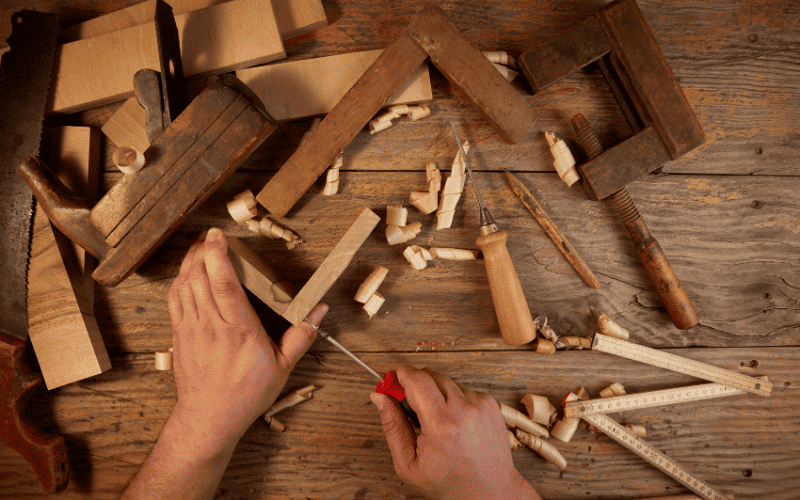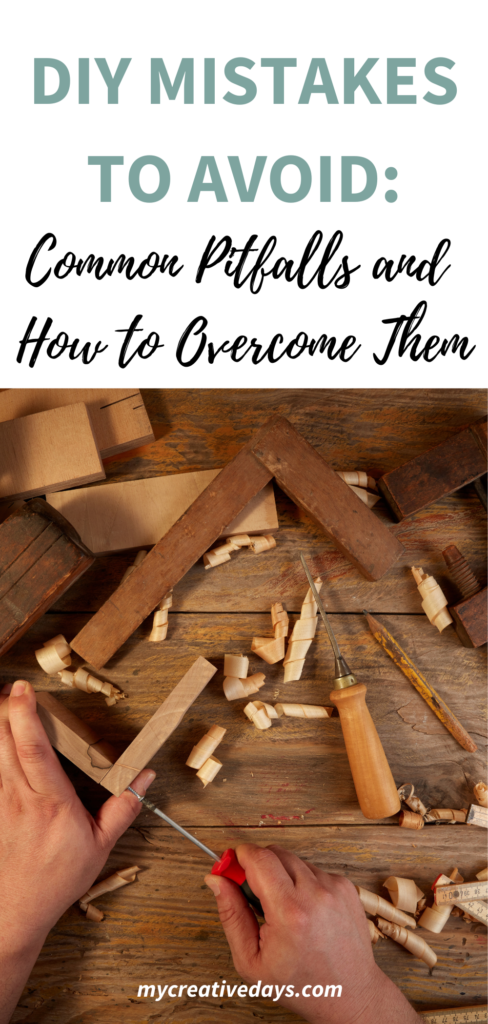Are you a passionate DIY enthusiast eager to embark on your next home improvement project? DIY can be incredibly rewarding, but it’s not without its challenges. From minor hiccups to major disasters, DIY mistakes can turn your dream project into a nightmare. But fear not! In this post, I will explore the most common DIY pitfalls and provide you with valuable insights on how to overcome them. So, before you grab that toolbox, let’s delve into these essential tips to ensure you know the DIY mistakes to avoid so your DIY endeavors are a resounding success.

-
Measure Twice, Cut Once:
One of the cardinal rules of DIY is precise measurement. Cutting corners on this step can lead to disastrous outcomes. Avoid rushed measurements and always double-check before making any cuts. Invest in quality measuring tools like a tape measure, carpenter’s square, or a laser level to achieve accuracy and precision.
-
Neglecting Safety Precautions:
Safety should be your top priority in any DIY project. Avoid reckless behavior and always wear appropriate safety gear, such as gloves, goggles, and a dust mask when dealing with hazardous materials. Familiarize yourself with the tools you’re using and follow the manufacturer’s instructions diligently to prevent accidents. You can find more safety tips and precautions for newbies in my post HERE.
-
Underestimating the Project Complexity:
Be realistic about your skills and the complexity of the project. Taking on a task beyond your expertise might lead to frustration and costly mistakes. Start with smaller, manageable projects to build your confidence and gradually tackle more challenging ones.
-
Ignoring Permits and Building Codes:
This is for much bigger projects. Before diving into major DIY projects, research and understand the necessary permits and local building codes. Failure to adhere to these regulations can result in fines or even having to undo your work. Always consult with local authorities or professionals to ensure your project meets all necessary requirements.
-
Using Low-Quality Materials:
Choosing low-quality materials to save money may seem tempting, but it can backfire in the long run. Invest in durable and reliable materials that stand the test of time. Quality materials not only enhance the finished project’s appearance but also improve its longevity and functionality.

-
Rushing the Prep Work:
Proper preparation is the foundation of a successful DIY project. Skipping or rushing this step can lead to uneven surfaces, peeling paint, or weak adhesion. Take the time to clean, sand, and prime surfaces before painting or applying adhesives to ensure a professional finish.
-
Overlooking the Importance of Planning:
The saying “measure twice, cut once” applies to planning as well. Thoroughly plan your project, create a detailed checklist, and visualize the entire process from start to finish. Planning helps identify potential challenges and offers solutions before you encounter them.
-
Avoiding Professional Help When Necessary:
As much as you enjoy DIY, some projects are best left to the experts. Plumbing, electrical work, or structural changes require specialized knowledge and experience. Don’t hesitate to hire a professional if you’re unsure about handling certain tasks.
With these valuable insights into common DIY mistakes and how to avoid them, you’re now equipped to tackle your projects with confidence. Remember to prioritize safety, plan meticulously, and use high-quality materials. Embrace the learning process, as mistakes may happen, but they also present opportunities for growth. By overcoming these pitfalls, your DIY journey will be filled with rewarding achievements and successful transformations.
If you want to learn more easy projects to start out with, I am sharing new videos on my YouTube channel every week! Head HERE to find my channel and make sure to SUBSCRIBE when you are there so you don’t miss any of them!
PIN THIS POST!

If you found these DIY mistakes to avoid helpful, you will also love these posts:
How to Successfully Tackle Your First DIY Project
10 Essential Tools Every Beginner DIYer Needs
How To Prep Furniture For A Makeover

